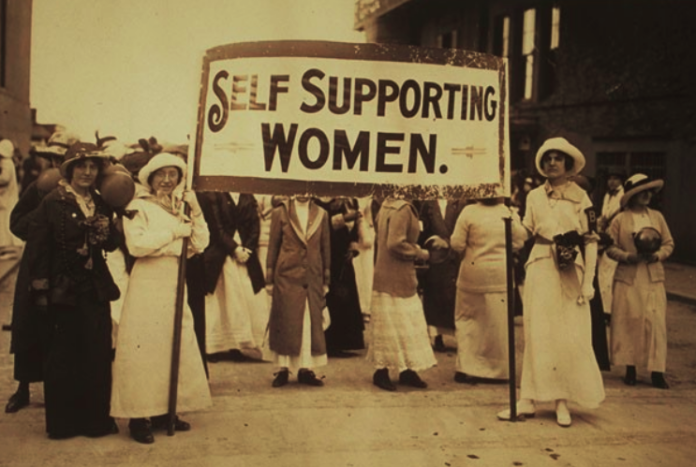In exploring the historical underpinnings of women’s rights, it is essential to navigate a complex tapestry woven throughout ages and cultures. The emergence of women’s rights is not merely a modern phenomenon but rather a culmination of centuries of advocacy, resistance, and resilience. The trajectory of this struggle is underlined by the contributions of numerous pioneers whose legacies continue to resonate today, inspiring contemporary movements and future generations.
The roots of women’s rights can be traced back to ancient civilizations, wherein the roles and expectations of women varied significantly across different cultures. However, it was the Enlightenment period that catalyzed a broader discourse surrounding human rights, ultimately framing the groundwork for addressing women’s inequalities. Figures such as Mary Wollstonecraft emerged, advocating for the intellectual and social emancipation of women, positing that women ought not to be relegated to the domestic sphere but should instead have equal access to education and participation in societal affairs.
To comprehensively understand where the concept of women’s rights began, it is crucial to explore ancient traditions and philosophies, the impact of the Enlightenment, and the evolution of activism leading into the 20th century.
In ancient civilizations, the status of women varied widely. In Egypt, for example, women enjoyed a relatively high degree of legal autonomy, able to own property and initiate divorce. Concurrently, Greco-Roman societies often confined women to domestic roles, yet prominent figures like Sappho showcased women’s intellectual capabilities, challenging societal norms. Thus, even in ancient societies with restrictive gender roles, elements of female agency and rights existed.
The concept of chattel and legal personhood has also guided discussions of women’s rights throughout history. In Medieval Europe, the legal doctrines of coverture and feme sole illustrated the varying degrees of rights that women could hold depending on their marital status. Women who remained single could own property and participate in legal contracts, contrasting starkly with married women whose legal existence was subsumed under their husbands. Such distinctions laid bare the necessity for a more equitable legal framework that recognized women’s rights irrespective of their marital status.
The Enlightenment heralded a momentous shift in the perception of individual rights. Philosophers like John Locke and Jean-Jacques Rousseau fostered an environment ripe for questioning traditional hierarchies. In this milieu, Mary Wollstonecraft’s seminal work, “A Vindication of the Rights of Woman,” emerged. Wollstonecraft argued fervently for women’s education and autonomy, asserting that women should be seen as rational beings capable of contributing to society. Her assertions laid the intellectual groundwork for subsequent movements advocating for women’s rights.
As the Industrial Revolution unfolded in the 19th century, women began to converge into the workforce in unprecedented numbers. Although they were often subjected to exploitative labor conditions, this period also marked a critical juncture for women’s rights as activism began to flourish. With burgeoning awareness around labor rights, women began to organize for improved working conditions, suffrage, and broader social reforms. The Seneca Falls Convention of 1848 in the United States represented a watershed moment, as it formalized demands for women’s rights, particularly the right to vote, reflecting a growing recognition of women’s disenfranchisement.
Despite these strides, the movement encountered substantial resistance galvanized by entrenched societal norms. The suffrage movement, which took root during this time, saw women from diverse backgrounds uniting to challenge the status quo. Leaders such as Susan B. Anthony, Elizabeth Cady Stanton, and Sojourner Truth championed this cause, employing various means from protests to writings that articulated the necessity for women’s enfranchisement. Their efforts culminated in significant legislative gains; the passage of the 19th Amendment in 1920 was a monumental triumph for the women’s suffrage movement in the United States, yet it concurrently highlighted the necessity for intersectionality within the struggle for women’s rights.
As we moved into the 20th century, the feminist movements diversified and expanded, explicitly addressing various issues such as reproductive rights, workplace equality, and domestic violence. The activism of the second wave feminists, particularly during the 1960s and 70s, encompassed a spectrum of rights that moved beyond suffrage to address systemic inequalities present in education, employment, and reproductive autonomy. Figures such as Betty Friedan, whose iconic work “The Feminine Mystique” questioned the roles women were expected to play within society, emphasized the discontent that many women felt, spurring renewed activism across the globe.
The concepts of intersectionality and inclusivity became pivotal during this era, acknowledging the varied experiences women face based on race, class, sexuality, and geography. Activists like Audre Lorde and bell hooks brought forth the understanding that women’s experiences are not monolithic and that true liberation must consider the complexity of individual identity. The vibrant dialogues and subsequent actions stemming from these discussions allowed for a more comprehensive understanding of women’s rights, paving the way for movements focusing on women of color, LGBTQIA+ rights, and global perspectives.
Even in contemporary discourse, the evolution of women’s rights continues to be fraught with challenges. Global movements such as #MeToo and Time’s Up, initiated in response to rampant instances of sexual harassment and gender-based violence, exemplify how the fight for women’s rights remains an ongoing endeavor. These movements have ignited a renewed sense of urgency and solidarity, transcending geographic and cultural boundaries, reflecting the interconnectedness of global women’s rights advocacy.
In retrospect, the historical journey of women’s rights encompasses a rich tapestry of struggles, achievements, and lessons learned. The exploration of this trajectory reveals not only the resilience of women throughout history but also the significance of their legacies. The commitment, sacrifices, and victories of past generations have forged pathways that continue to inspire present-day feminists and activists. Analyzing where the concept of women’s rights began compels us to recognize the profound impact of these pioneering women who paved the way, ensuring that their struggles resonate as powerful testaments to enduring advocacy and activism, providing a foundation upon which future movements will build.





























